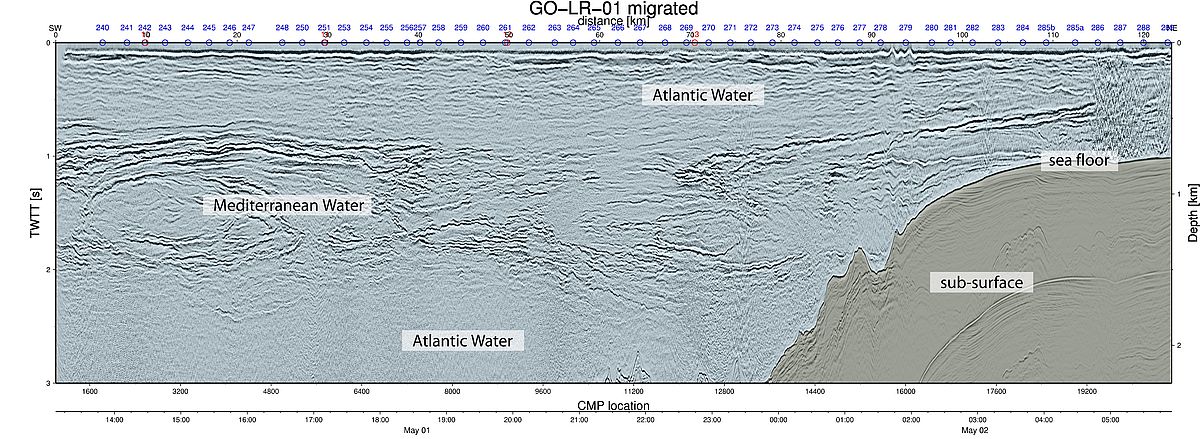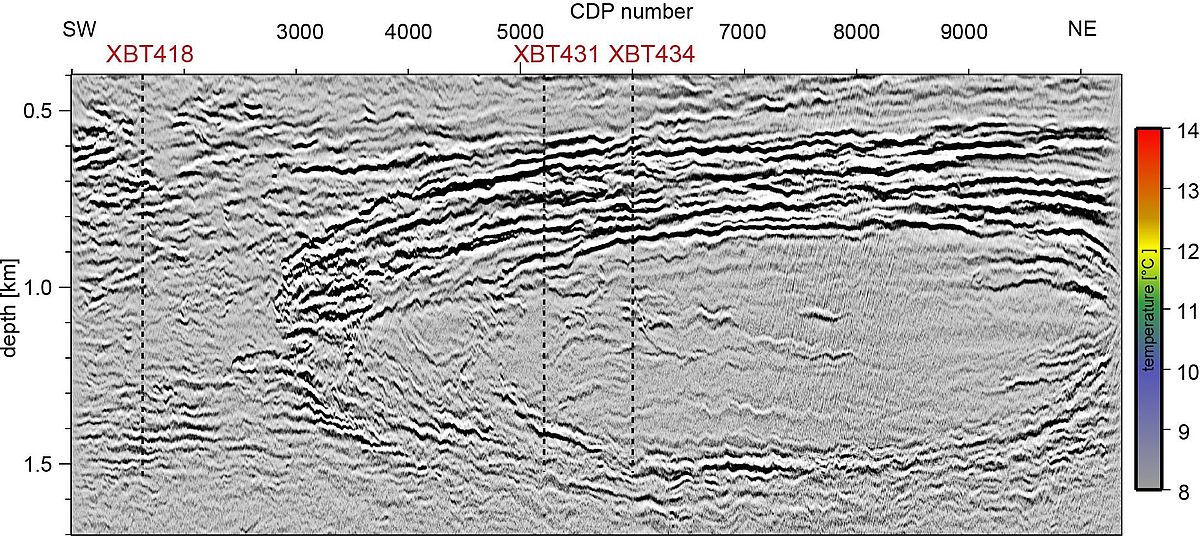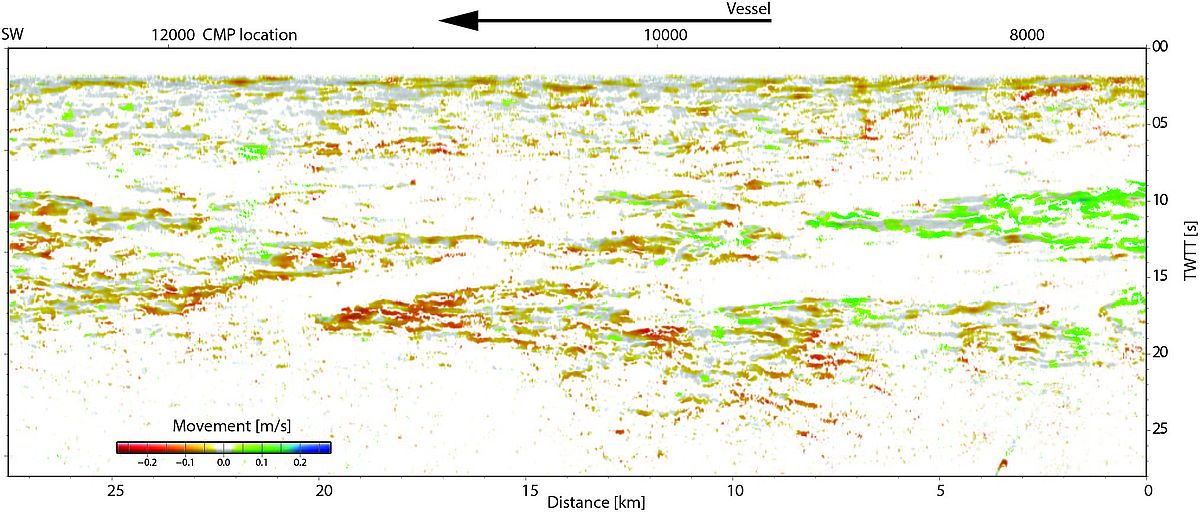Seismic Oceanography
Seismic reflection methods have been successfully applied to oceanographic issues. Seismic Oceanography (SO) combines XBT and CTD surveys with seismic observations, to visualize long sections with a resolution down to a few meters. The challenge to a full investigation of mixing processes has been the tremendous span of spatial scales ranging from hundreds of kilometers to centimeters. Traditional hydrographic observations could only resolve the large scale effects by measuring temperature and salinity profiles at discrete locations typically several kilometers apart, whereas dedicated localized measurements allowed investigation of the ocean fine structure at the other end of the spatial spectrum. The intermediate scales have in contrast been difficult to observe systematically. Temperature and salinity data inverted from seismic observations that cover the intermediate scales provide images of mesoscale processes and allow the investigation of their dynamics at unprecedented resolution.
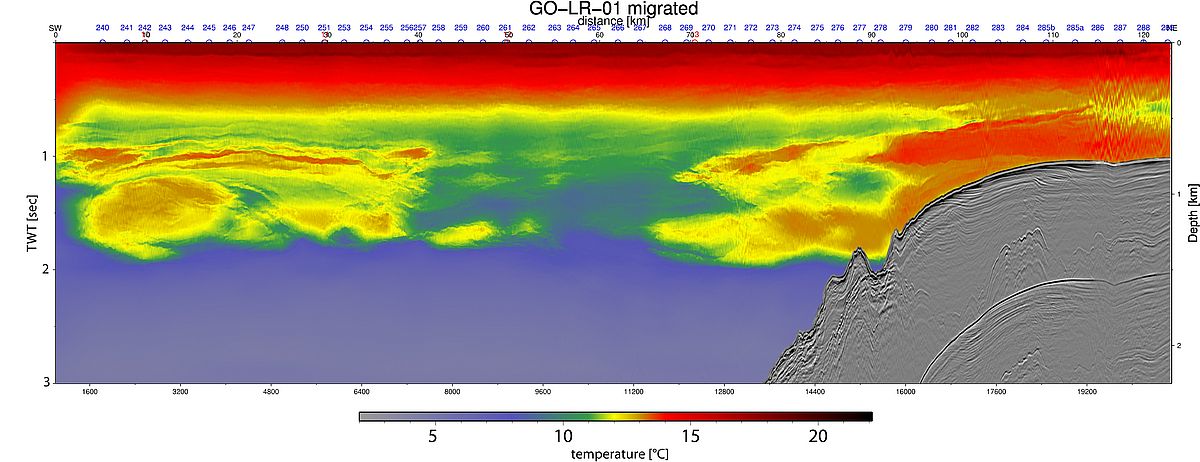
We applied this method to multi-channel seismic data acquired in the Gulf of Cadiz during the GO cruise [Hobbs et al., 2007], a region known for the generation of mesoscale Meddies. Meddies are rotating eddies of Mediterranean Outflow Water formed from the warm saline water flowing out of the Straits of Gibraltar and along the southern margin of Iberia. The Portimao Canyon, south of Portugal, disrupts this flow and is a locus for the creation of Meddies which detach from the main vein and drift away from the continental slope at the depth of neutral buoyancy (between 600-1400 m). Where the warm saline Mediterranean water and the cold Atlantic water mix, they generate strong acoustic impedance contrasts, and consequently create clear reflections that image the mixing processes (Figure 1). A Meddy with its main core between 800 and 1400 m can be clearly identified in the western part of the profile, while the eastern part cuts the main vein of Mediterranean Outflow Water. This Meddy was crossed a few days later on another seismic profile and the inverted temperature model (Figure 4 further below) enhance the structural image of the Meddy, especially the fine filaments at the top of the main core.
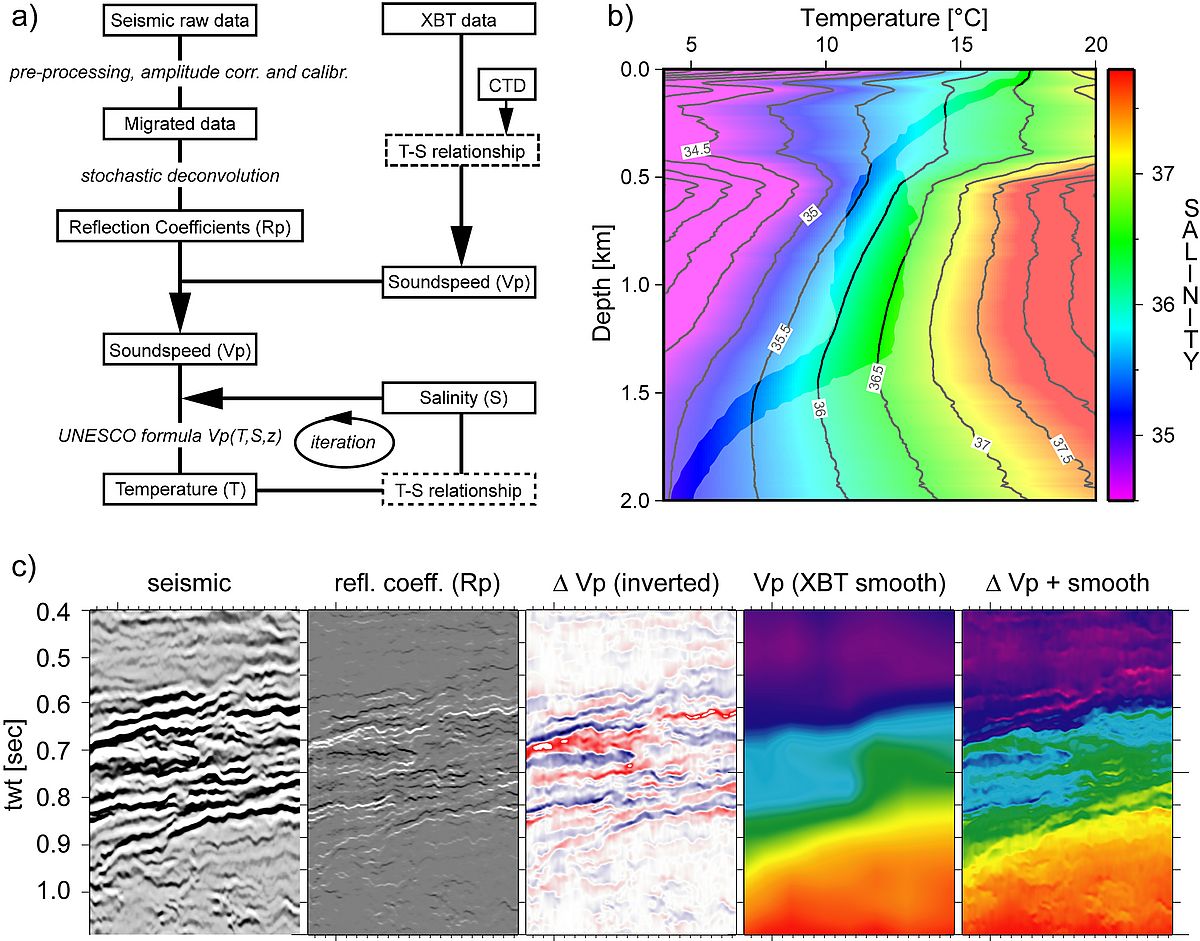
We invert sound-speed data und subsequently temperature and salinity images from combined seismic and hydrographic observations. However, unlike the solid earth, where the boundaries between two rock masses may be sharp and a description by the impedance above and below the boundary suffice, the boundaries in the ocean are affected by diffusion processes, so that the reflection coefficient needs to be described by continuous profiles of the vertical impedance gradient or the underlying properties sound speed and density. These quantities can be related to temperature and salinity of the water. For this we use a T-S(z) relationship (temperature-salinity) derived from CTD observations and the equation of state for seawater to simultaneously calculate temperature and salinity for the whole profile in an iterative process (Figure 2).
The temperature and salinity inversion results can be independently verified and match the XBT data within an average error of 0.1° C. In Figure 3 these correlations are displayed at three locations, marked in Figure 4 as dotted lines. The CTD measurements were temporally not coincident with the seismic traces and therefore salinity could not be independently evaluated. However, the inverted salinity values fit to the XBT-derived salinity within an error of 0.1 psu. Although we do not have independent coincidental salinity data, our fit does reflect the robustness of our inversion.
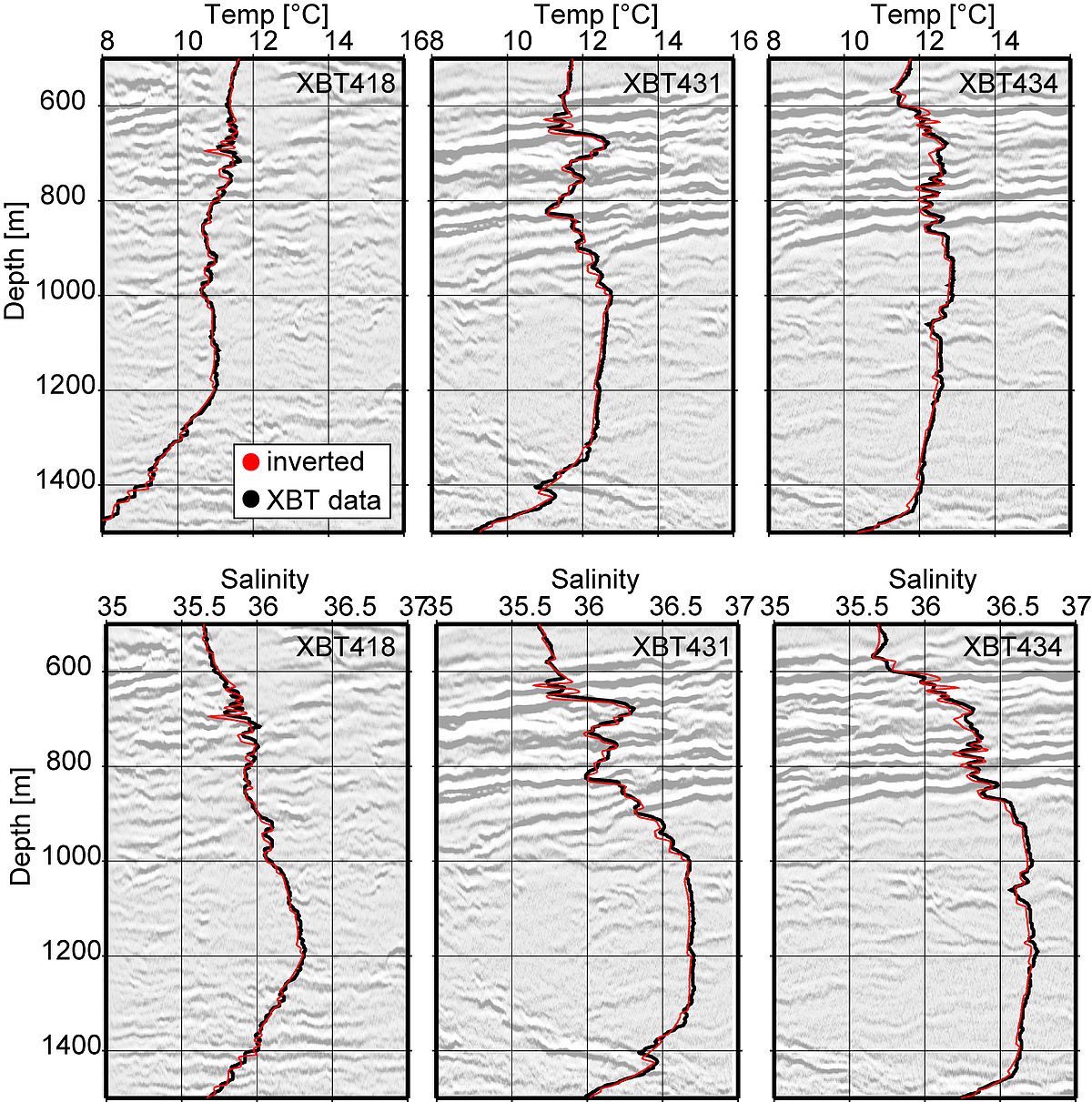
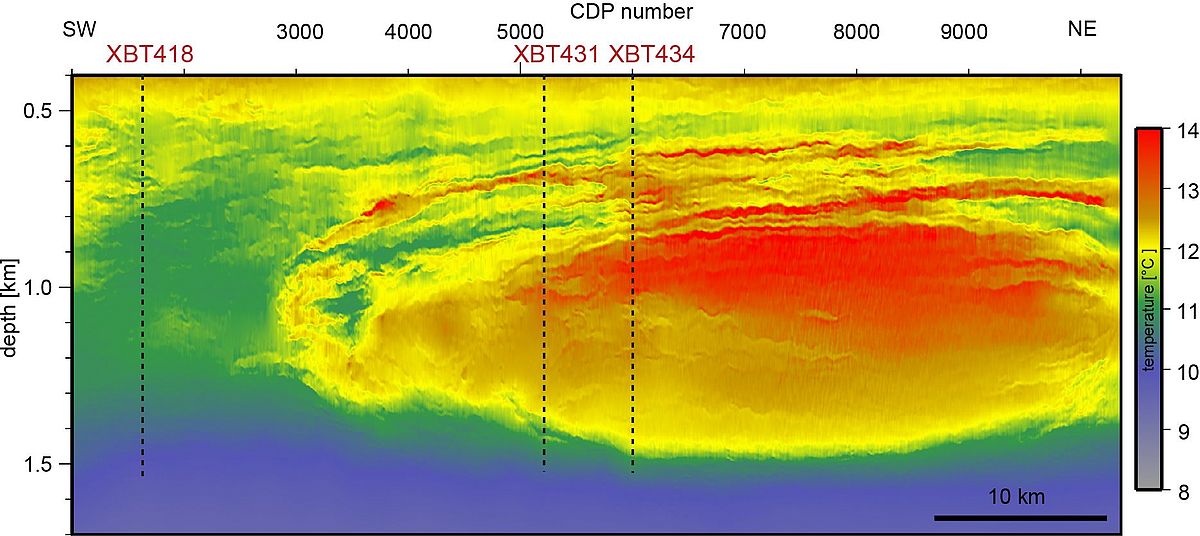
One additional aspect is the dynamical, temporally varying nature of water structures.We estimate temporal variations of reflectors in water structures as an inversion parameter. The dynamic property reflector movement velocity gives an additional parameter to characterize ocean water dynamics. We use the accurate sound-speed models to derive reflector movement velocities of water mass bodies as an additional property from seismic reflection data. For migration of seismic data over the solid Earth we know the geometry and need to find the optimum sound speed model, here we reverse this procedure, given the sound speed model we can compute the optimum geometry for a dynamic fluid and hence its motion. The movement velocity gives a dynamic property to the instant seismic reflector image and may have great potential to study the temporal dynamics of the water structure.
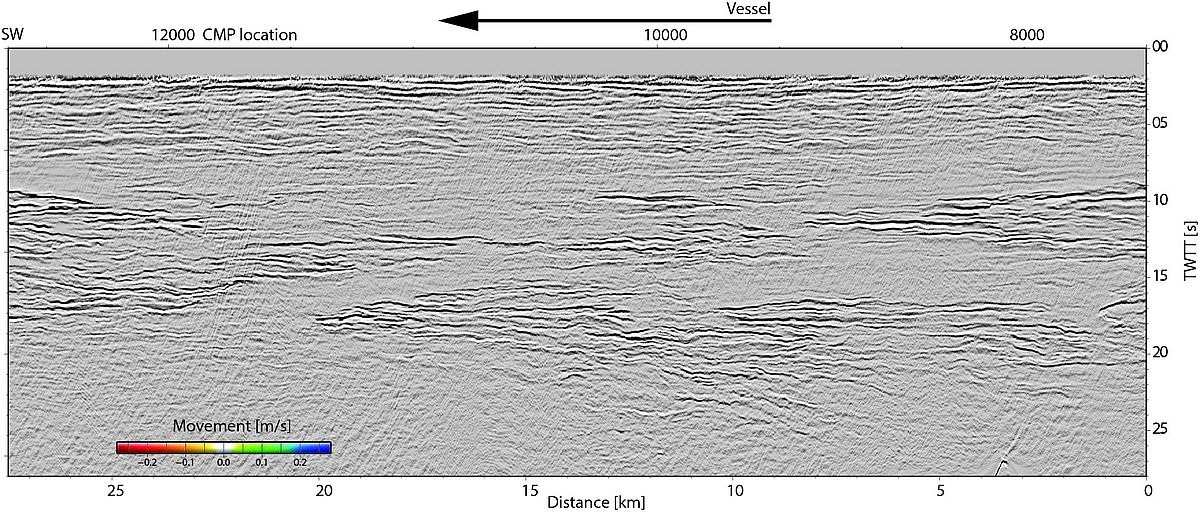
Literature:
- Papenberg, C., D. Klaeschen, G. Krahmann, and R. W. Hobbs (2010), Ocean temperature and salinity inverted from combined hydrographic and seismic data, Geophys. Res. Lett., doi:10.1029/2009GL042115
- Klaeschen, D., R. W. Hobbs, G. Krahmann, C. Papenberg, and E. Vsemirnova (2009), Estimating movement of reflectors in the water column using seismic oceanography, Geophys. Res. Lett., 36, L00D03, doi:10.1029/2009GL038973


